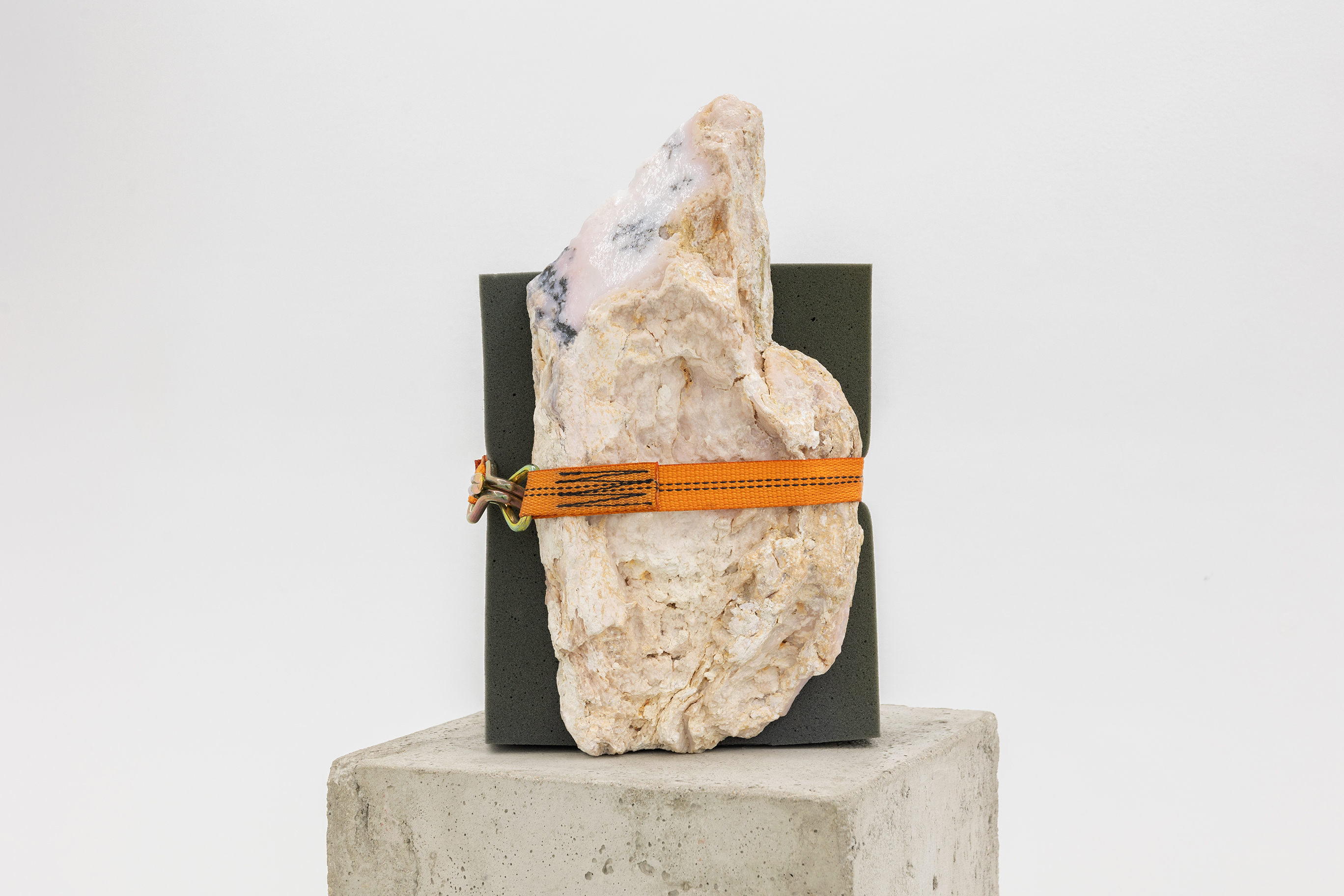
1.5:1 - Umbral de colapso (o margen de equilibrio)

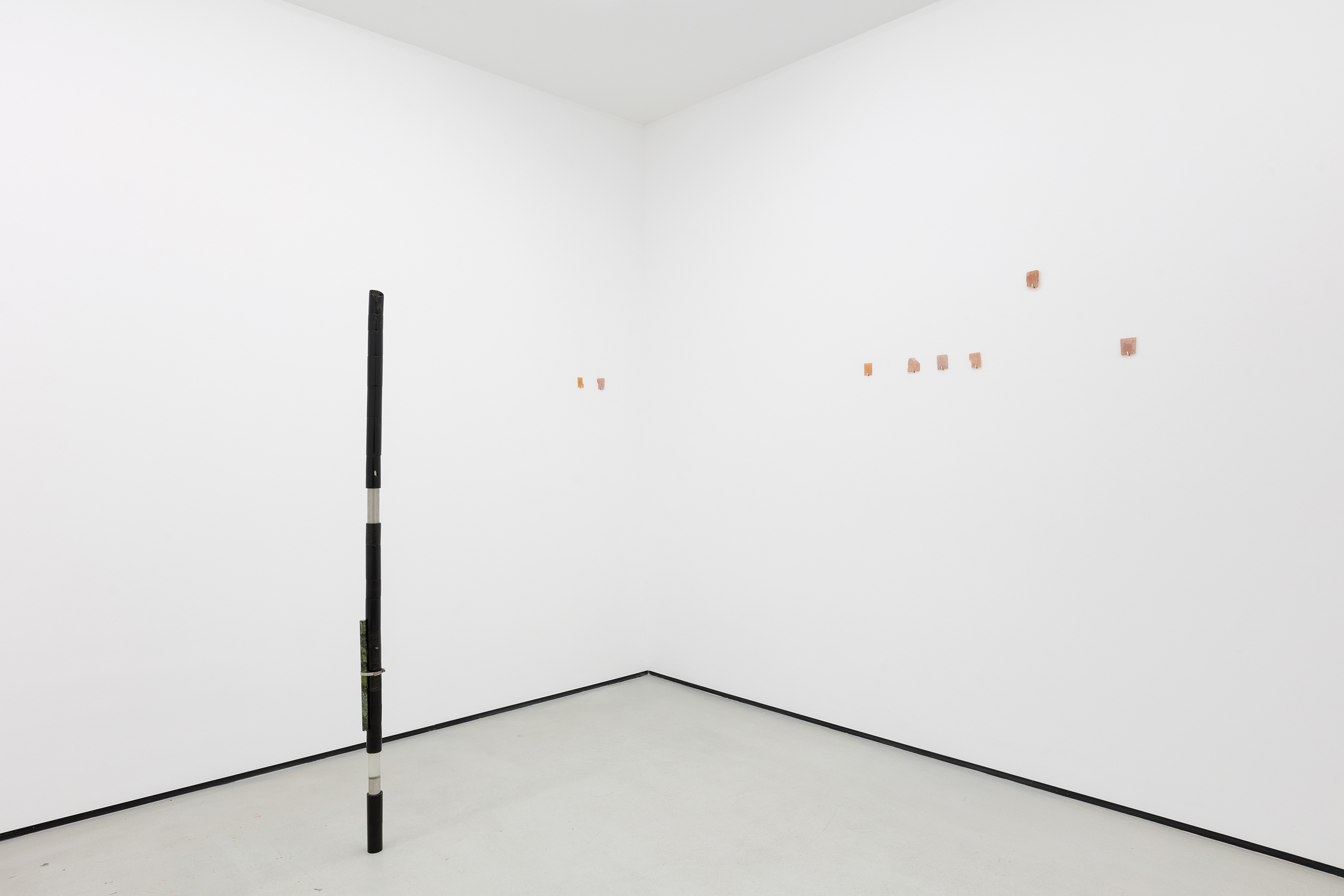
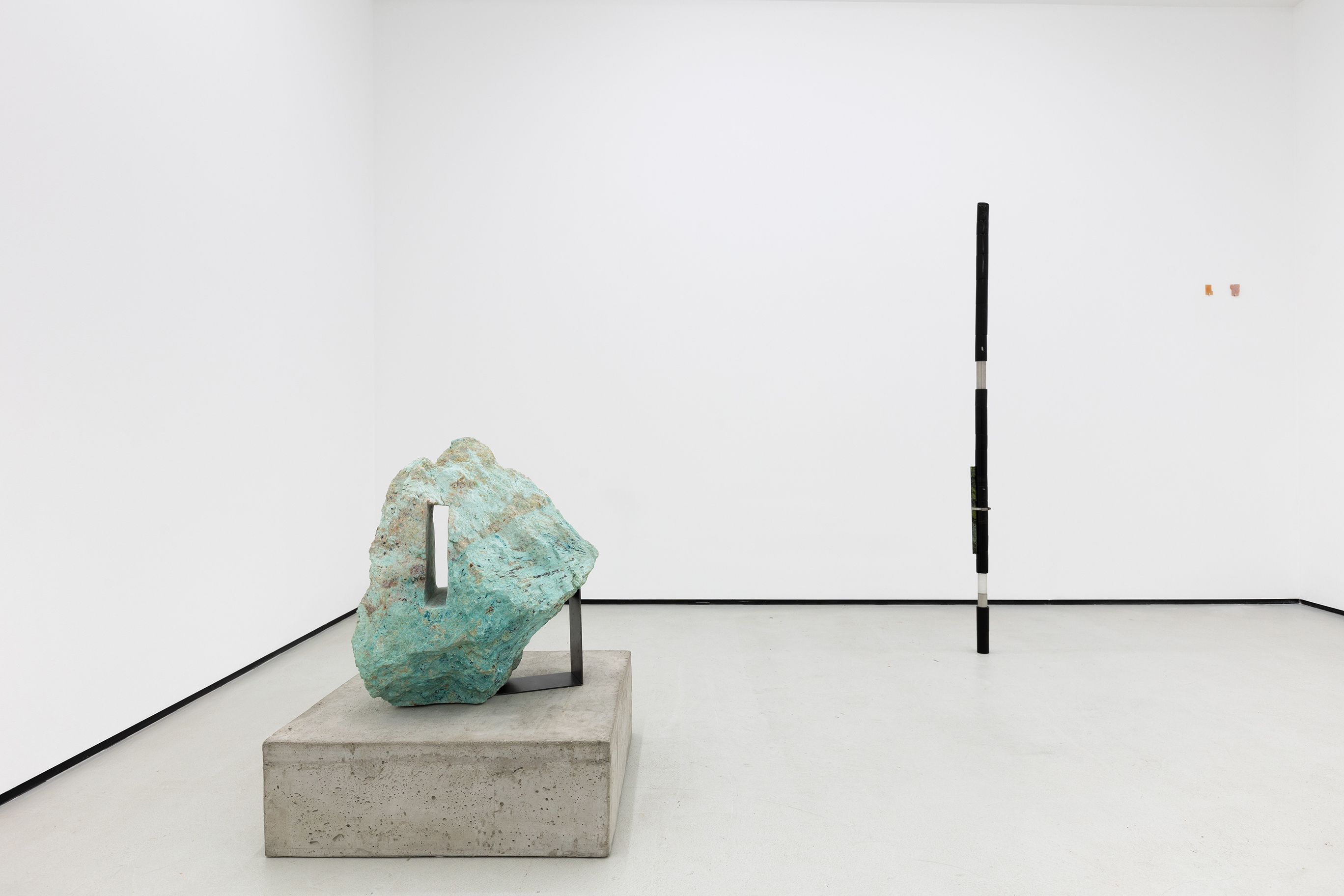
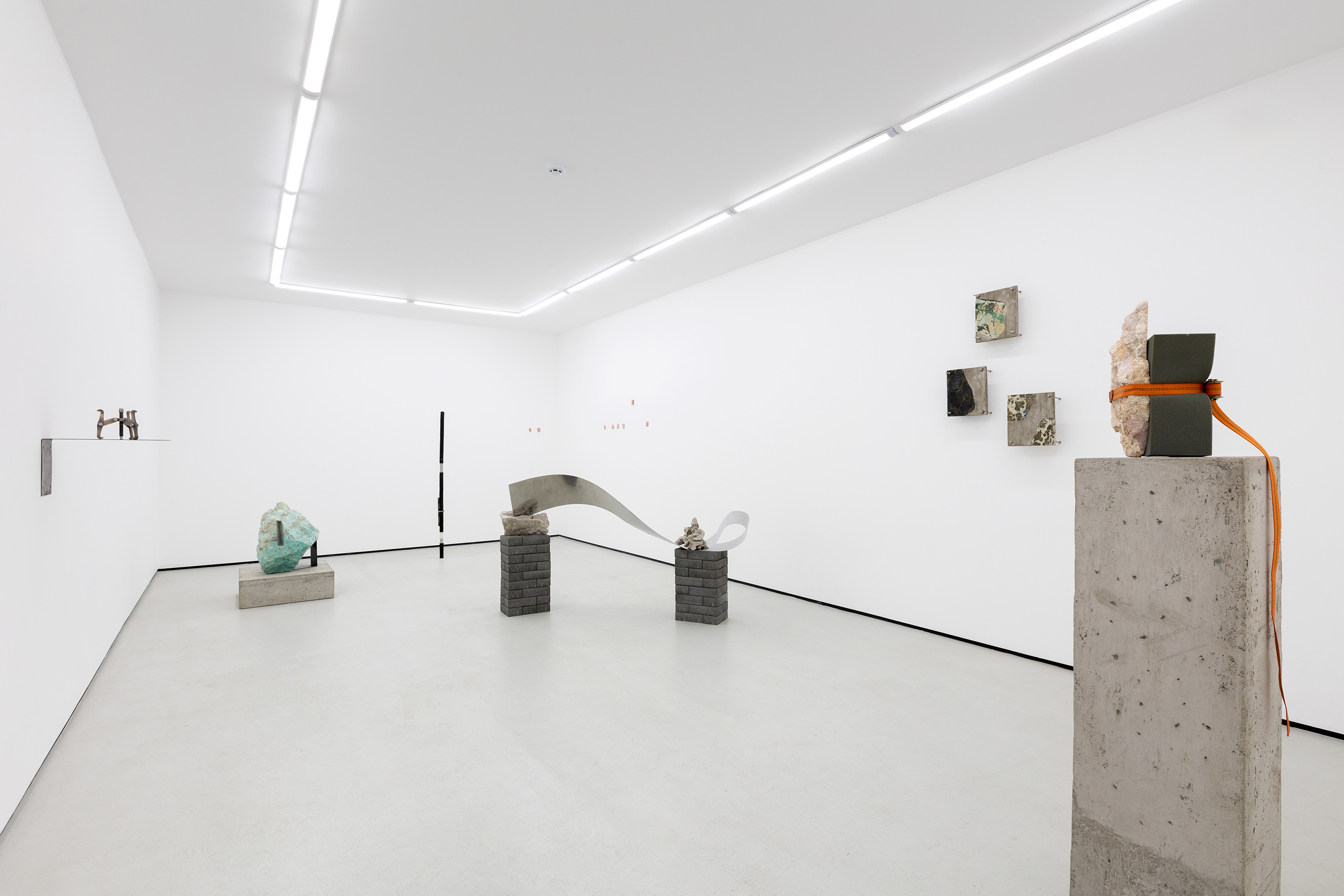
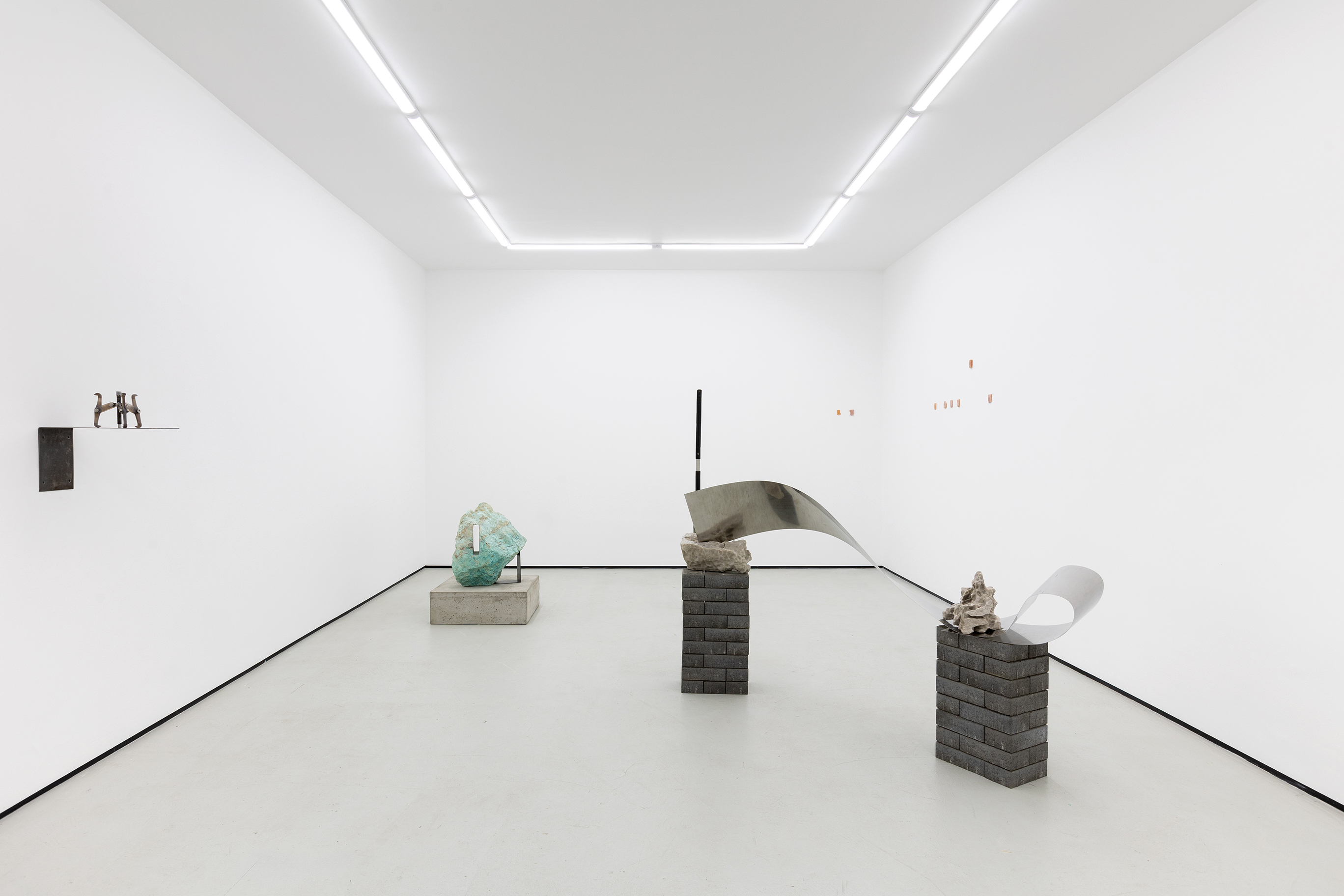
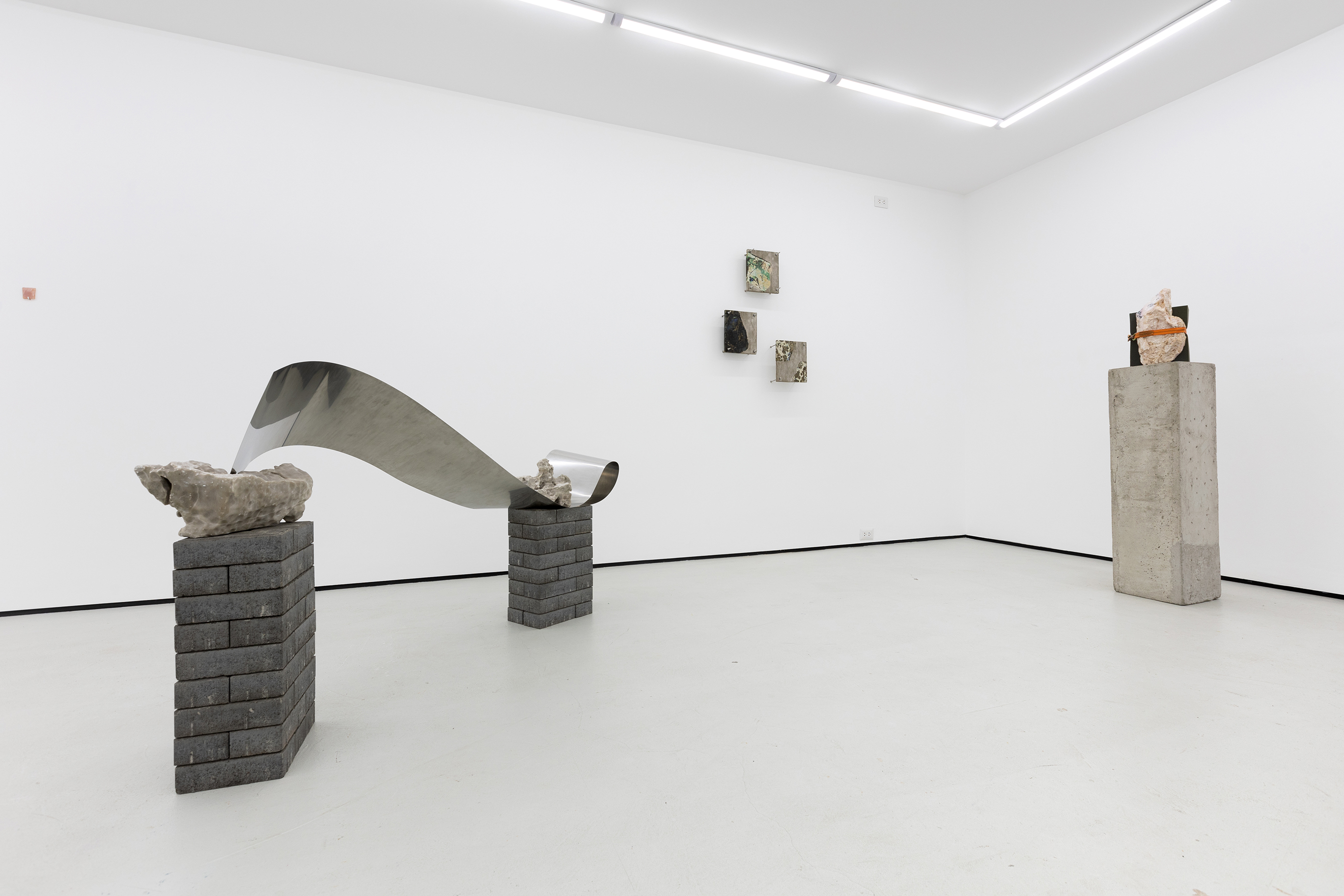
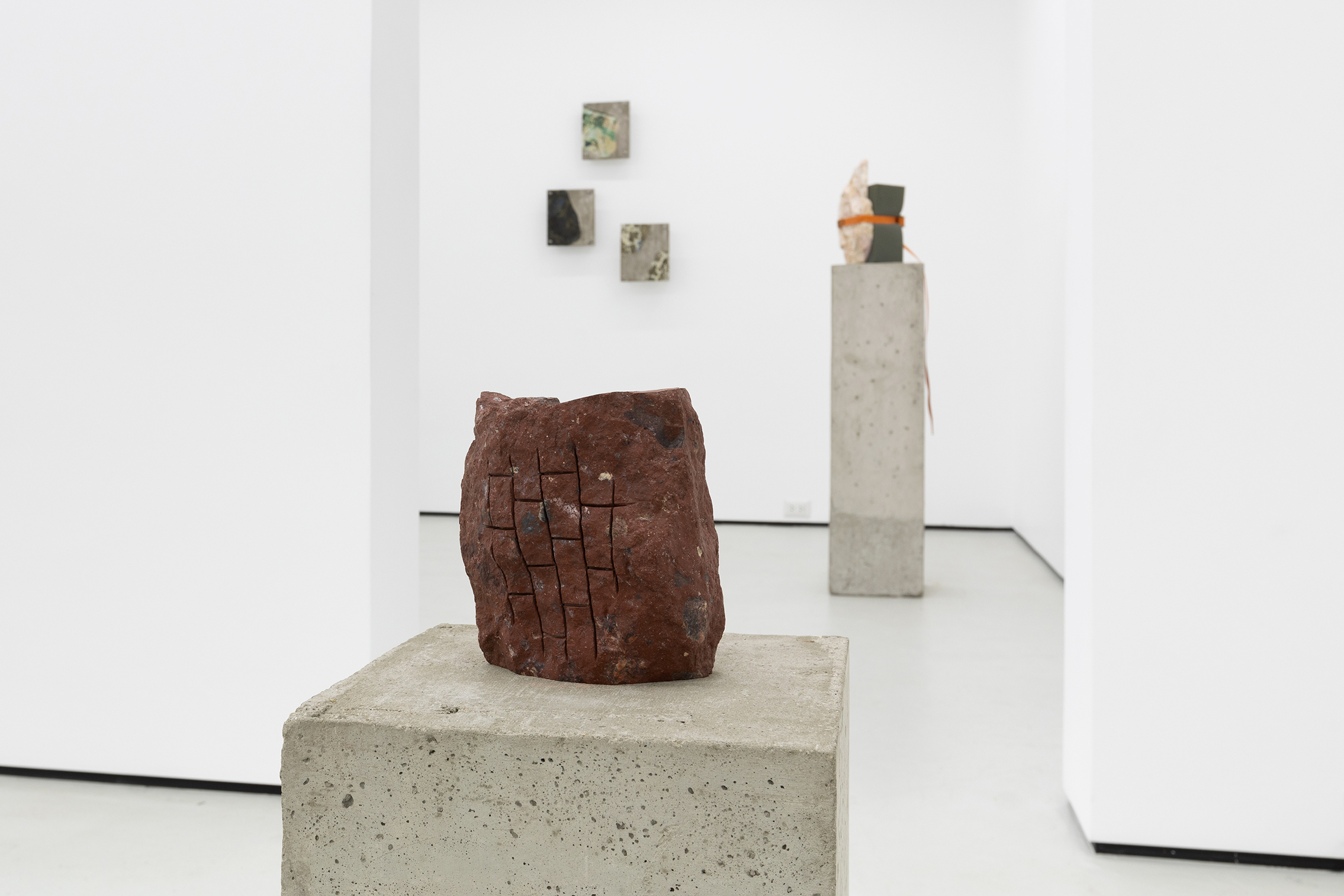
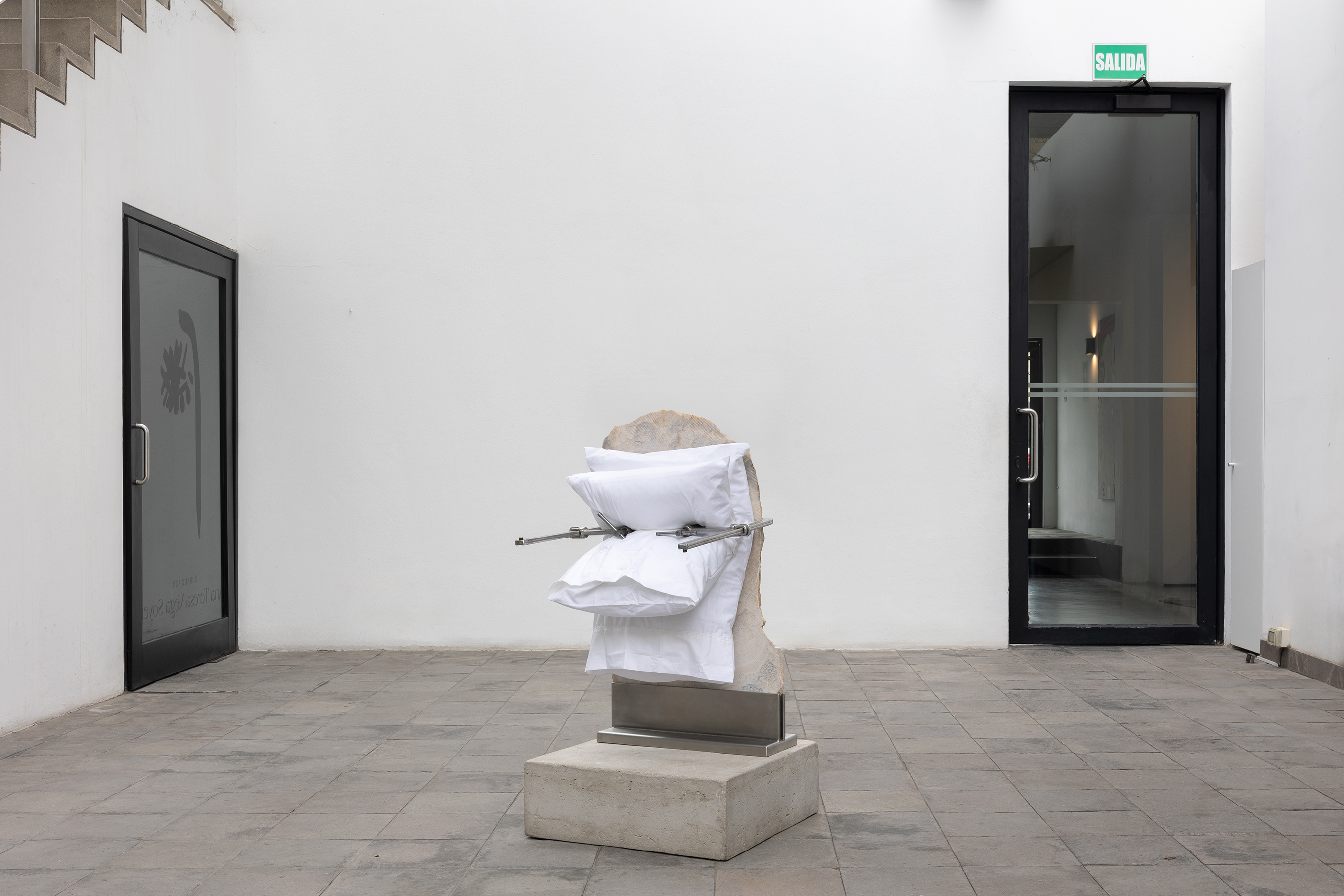
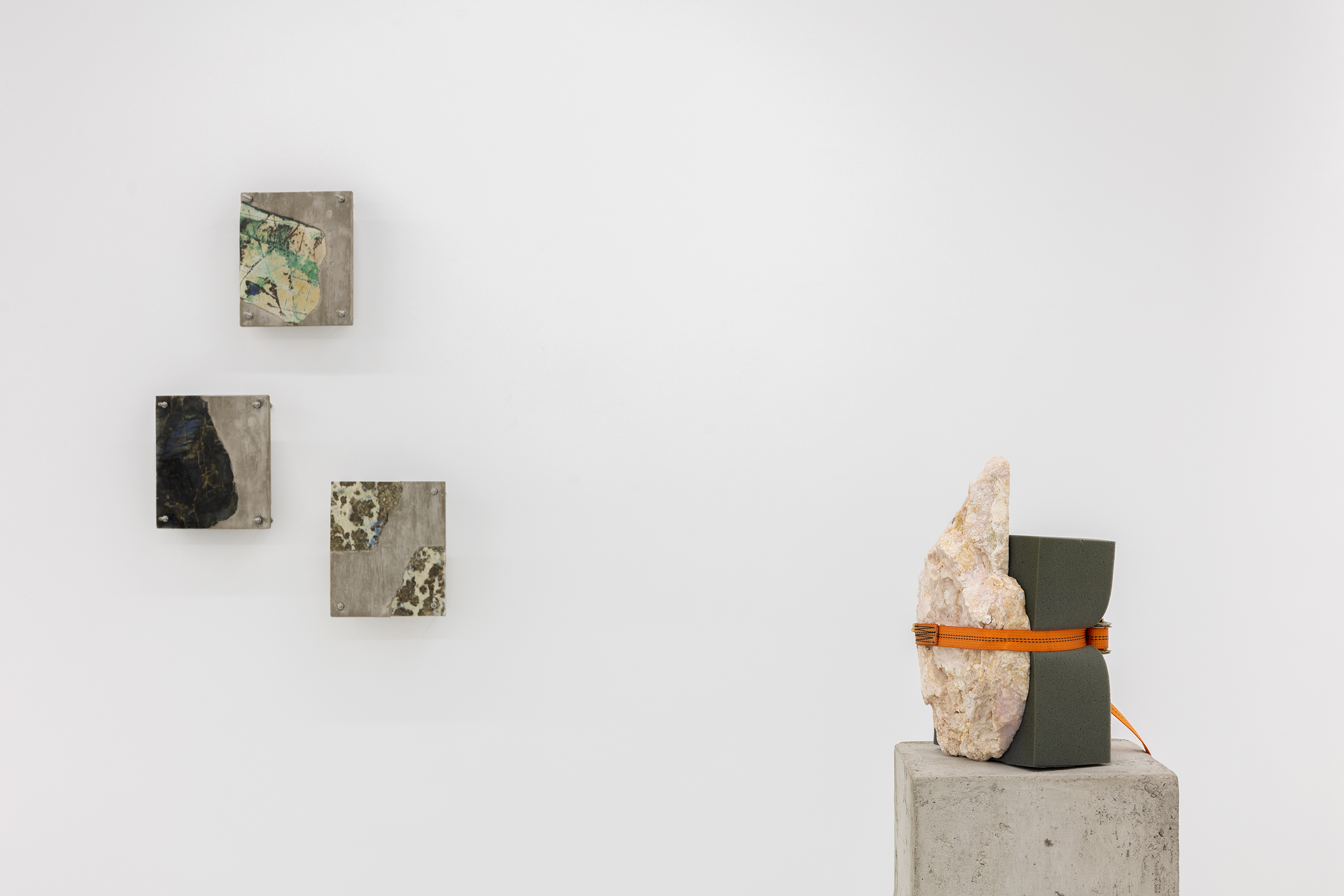
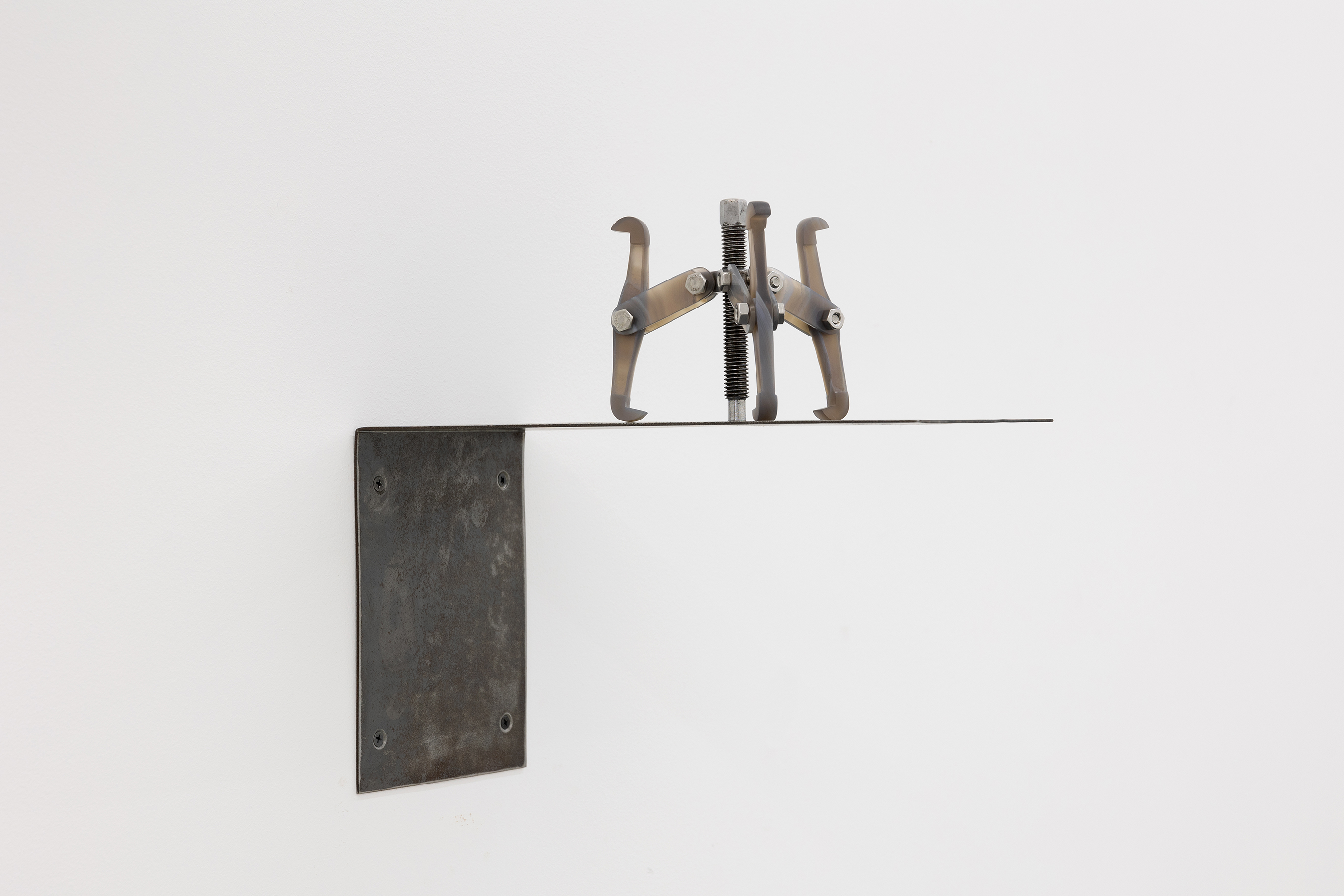
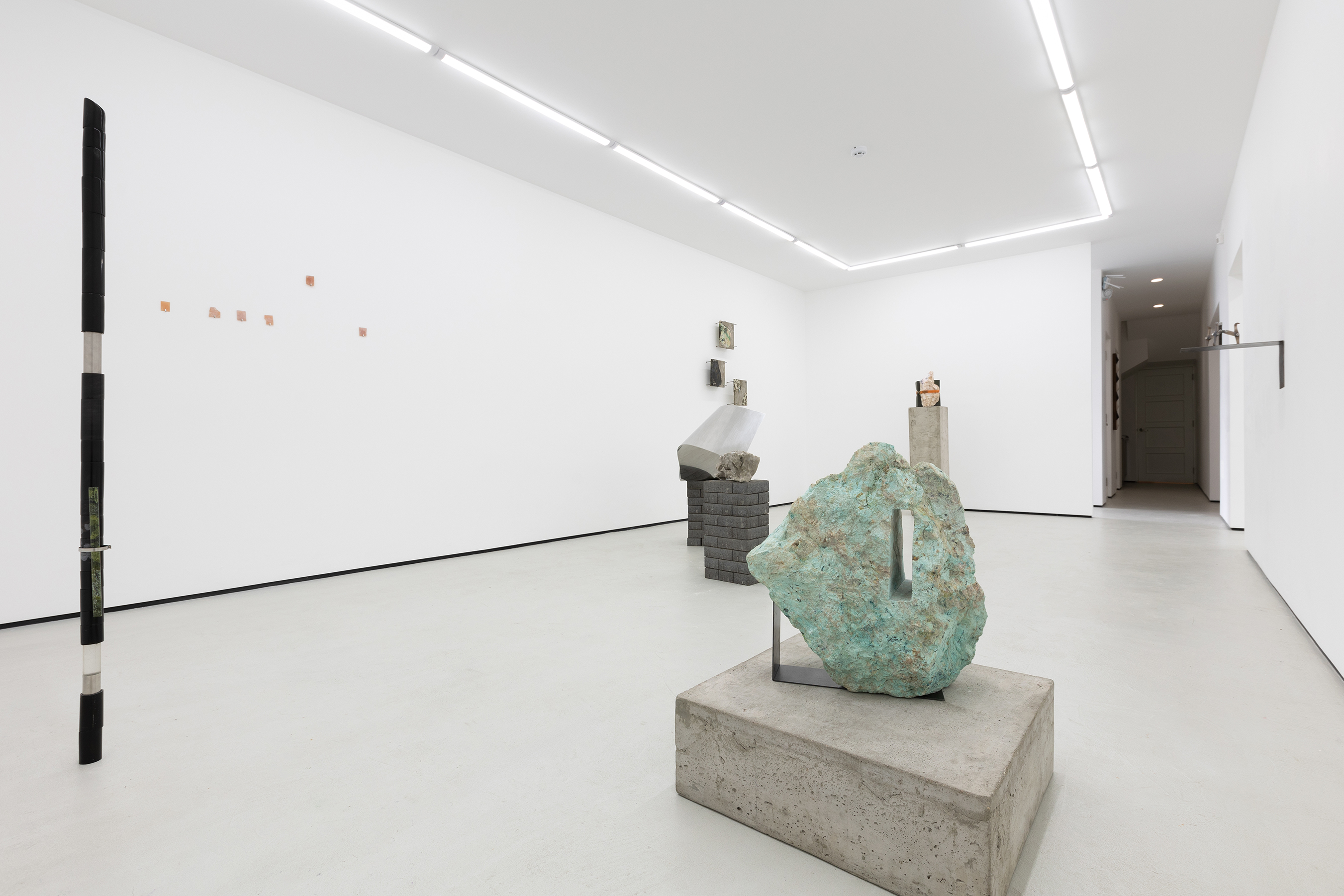
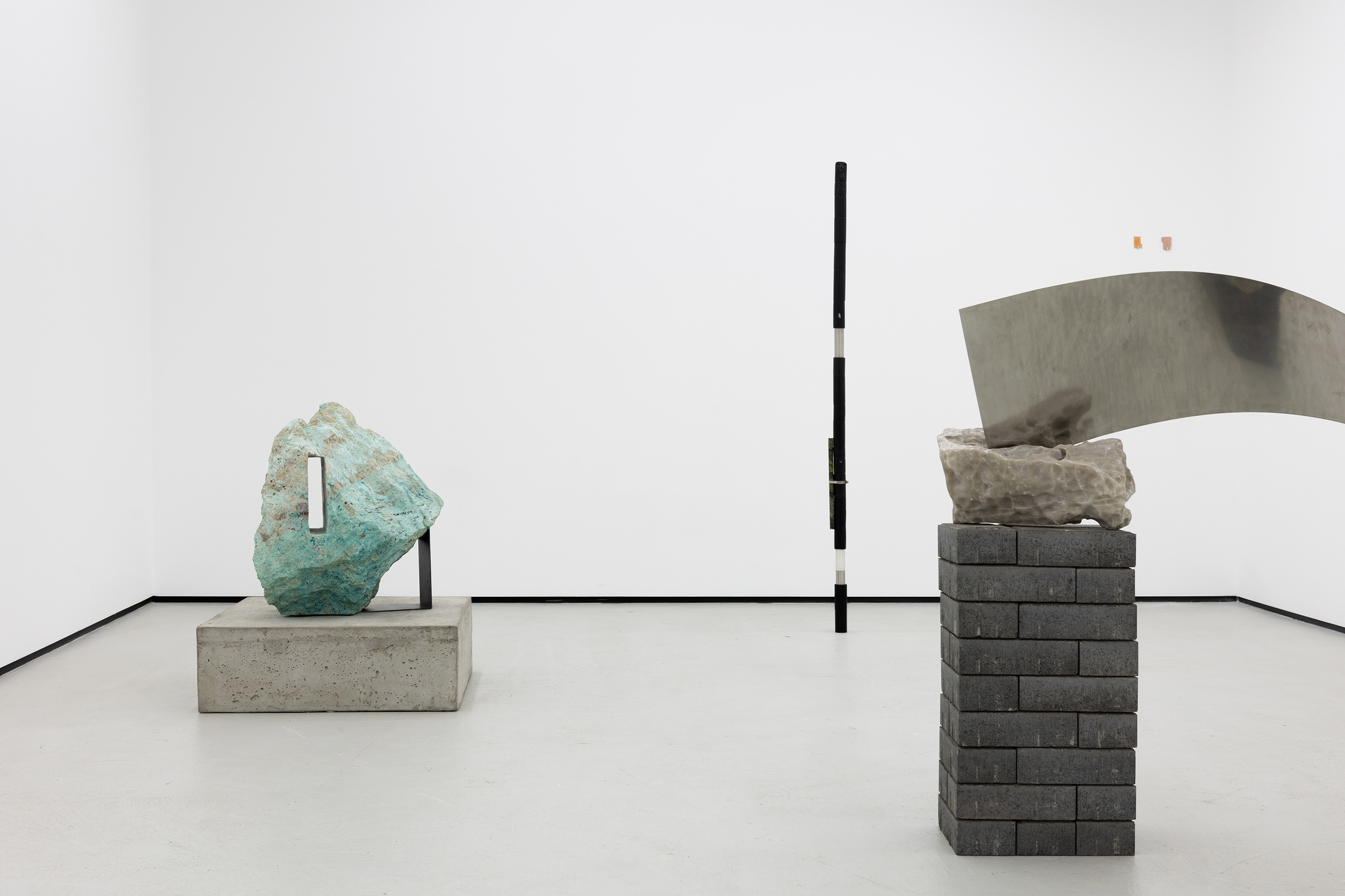
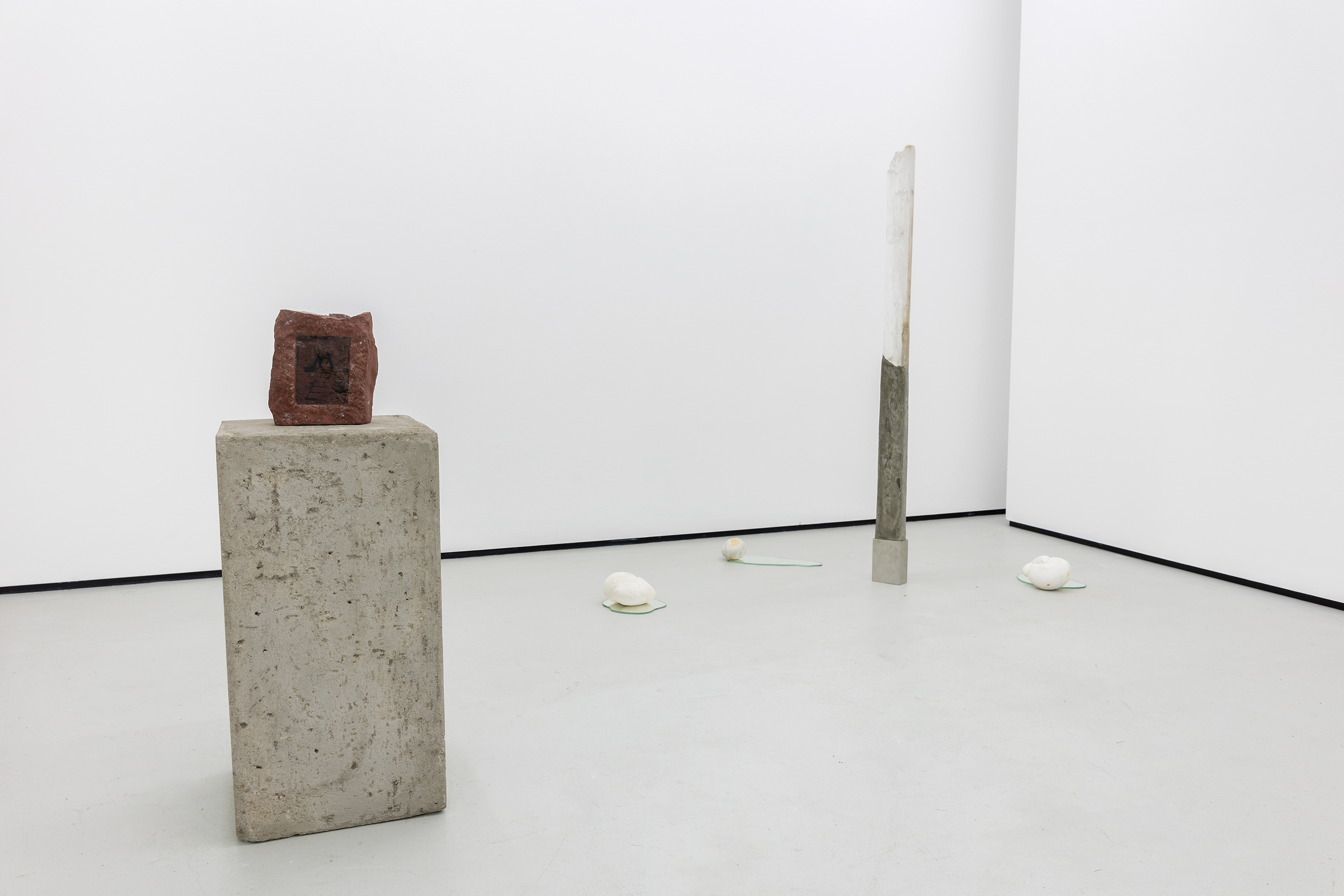
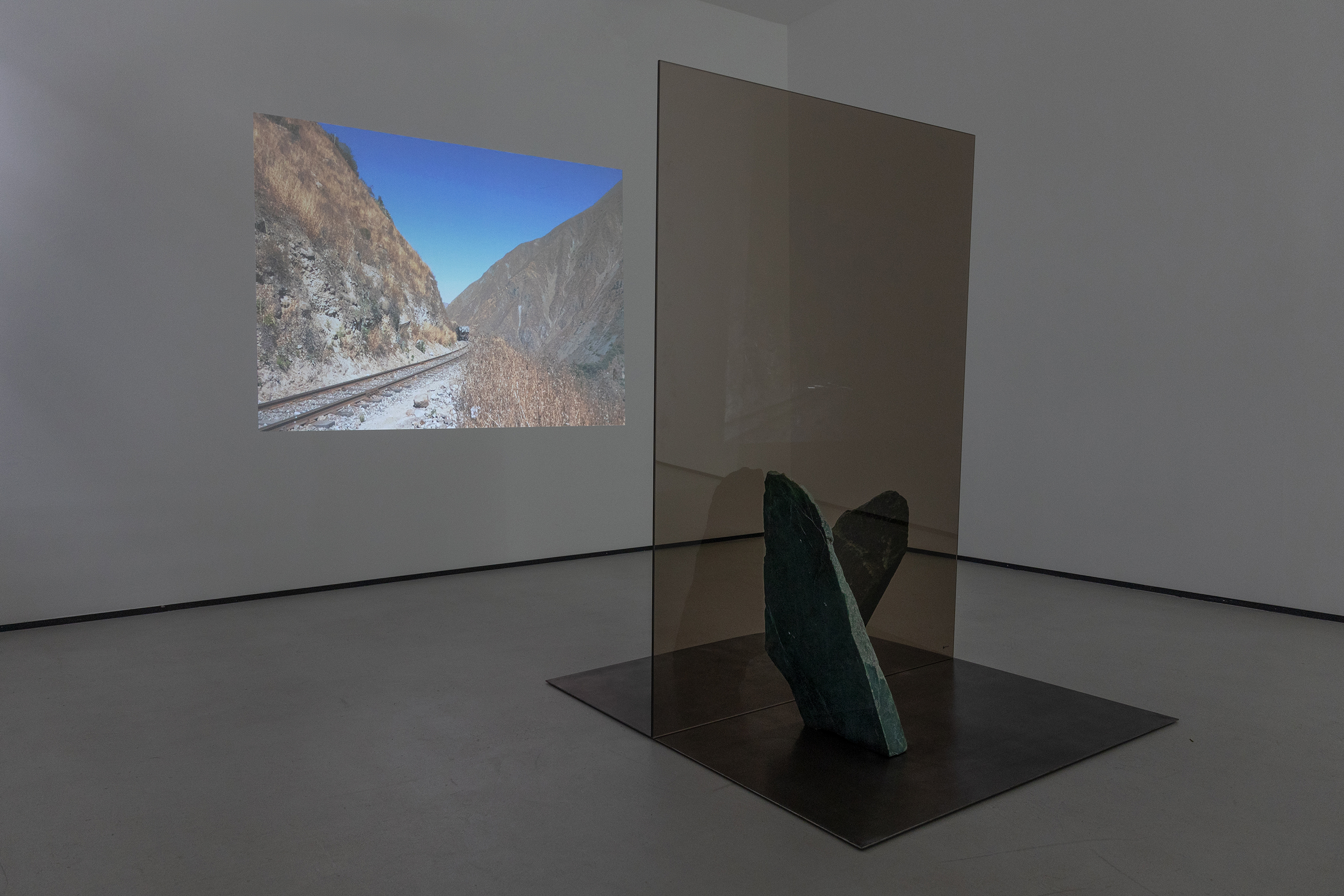
In her first solo exhibition, Italian artist Carla van den Berg presents a series of sculptures that condense the visual, material, and emotional tensions derived from her time in Lima, a city where structural fragility coexists with intense and symbolic urban density. Her work emerges from a careful observation of the built environment, operating between sculpture and architecture as languages to think about the social, the spatial, and the historical. Her practice is built upon material oppositions —soft and rigid, organic and manufactured, contained and unstable— sustained in unresolved tension. She uses materials such as stone, industrial sponge, aluminum, or fastening devices not only for their aesthetic qualities but also for what they express about the ways bodies —human, architectural, or urban— resist, yield, or adapt. By reappropriating materials linked to power or stability, her sculptures dismantle connotations of dominance, proposing readings through fragility, wear, and care. This interest in matter as a bearer of memory and tension situates her work in dialogue with certain practices of expanded minimalism, such as those of Richard Serra or Rachel Whiteread, where emptiness, weight, or absence summon the viewer’s body into a physical and critical experience. Van den Berg does not merely occupy space: she problematizes it. Her approach to architecture draws on principles of brutalism —the direct expressiveness of materials, the exposure of structure— combined with a fragmentary and tactile sensitivity, where each cut, joint, or assembly functions as an idea in itself. Her sculptures operate like sections of a city in tension, revealing both its latent strength and its precariousness. More than closed objects, these pieces invite us to inhabit imbalance. Stones inserted into industrial structures or soft materials subjected to mechanical tensions configure images of vulnerable resistance, where form is never definitive. Each work condenses opposing forces, evoking ruins, remnants, or unstable structures. Within that instability lies its power: a poetics of the essential understood not as purity, but as evidence of the persistent tension between body, space, and matter. Her work thus proposes a subtle critique of discourses of order and progress, betting on a politics of fragility as an alternative form of permanence and memory. Tarissa Revilla
Receive more information on available works from this exhibition.

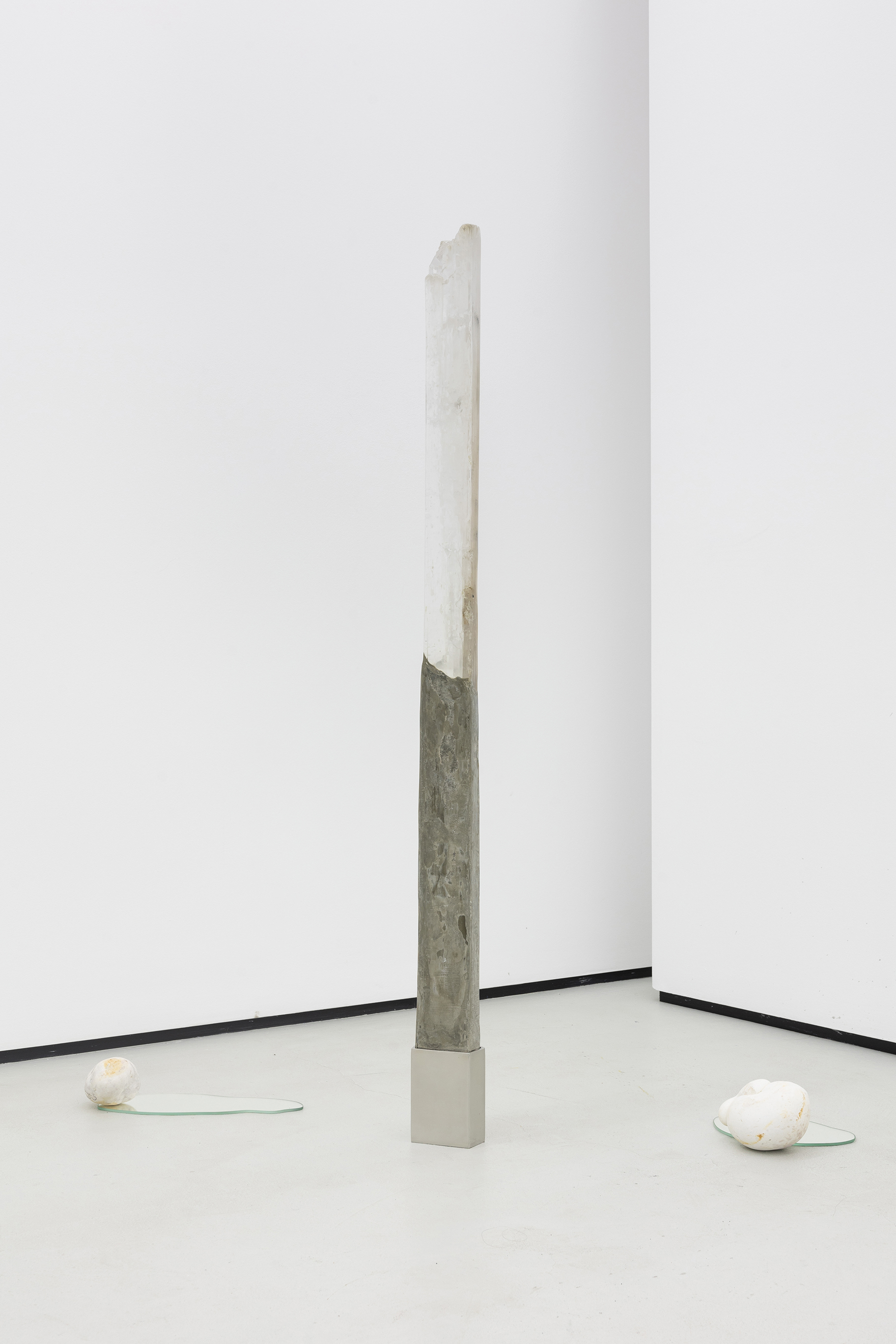
CaSO4
2025 Selenite; cement; steel 120 x 10 x 8 cm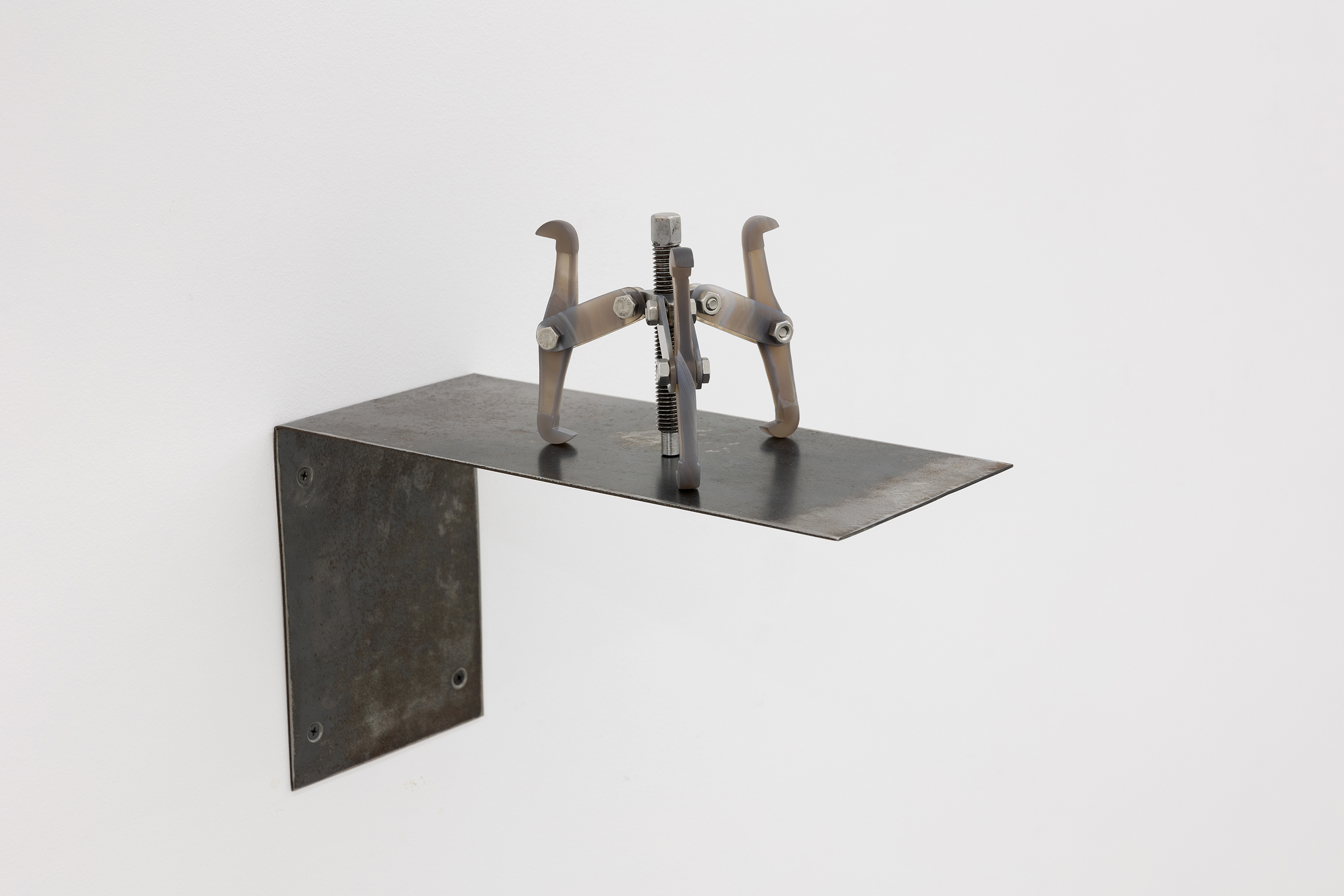
Aparato
2025 Agate; screws and bolts 15 x 8 x 8 cm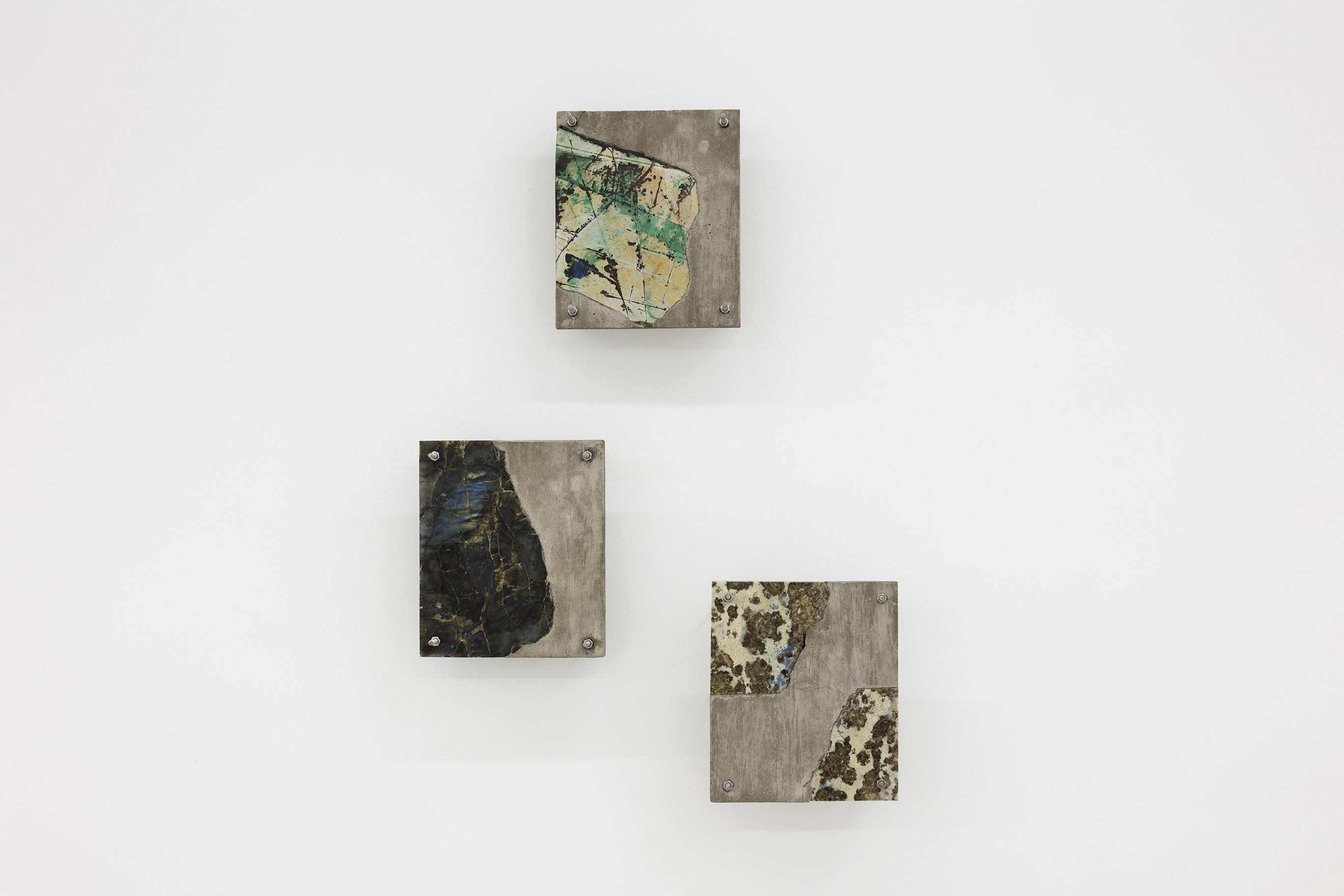
Con-fine
2025 Azurite malachite; labradorite; calcite with garnet; cement; bolts 30 x 20 x 2 cm (each)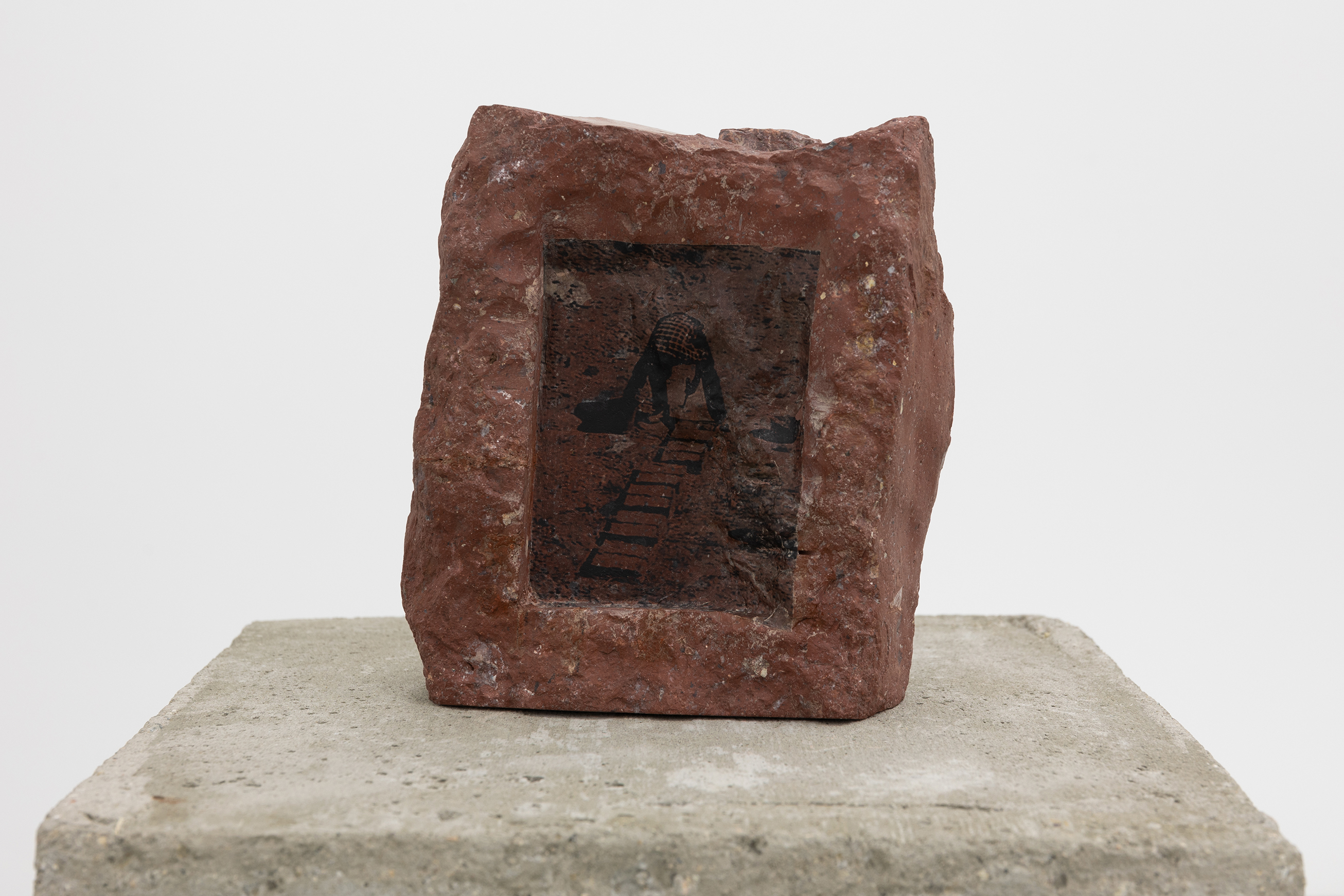
Ladrillo
2025 Red jasper; photo transfer 30 x 20 x 10 cm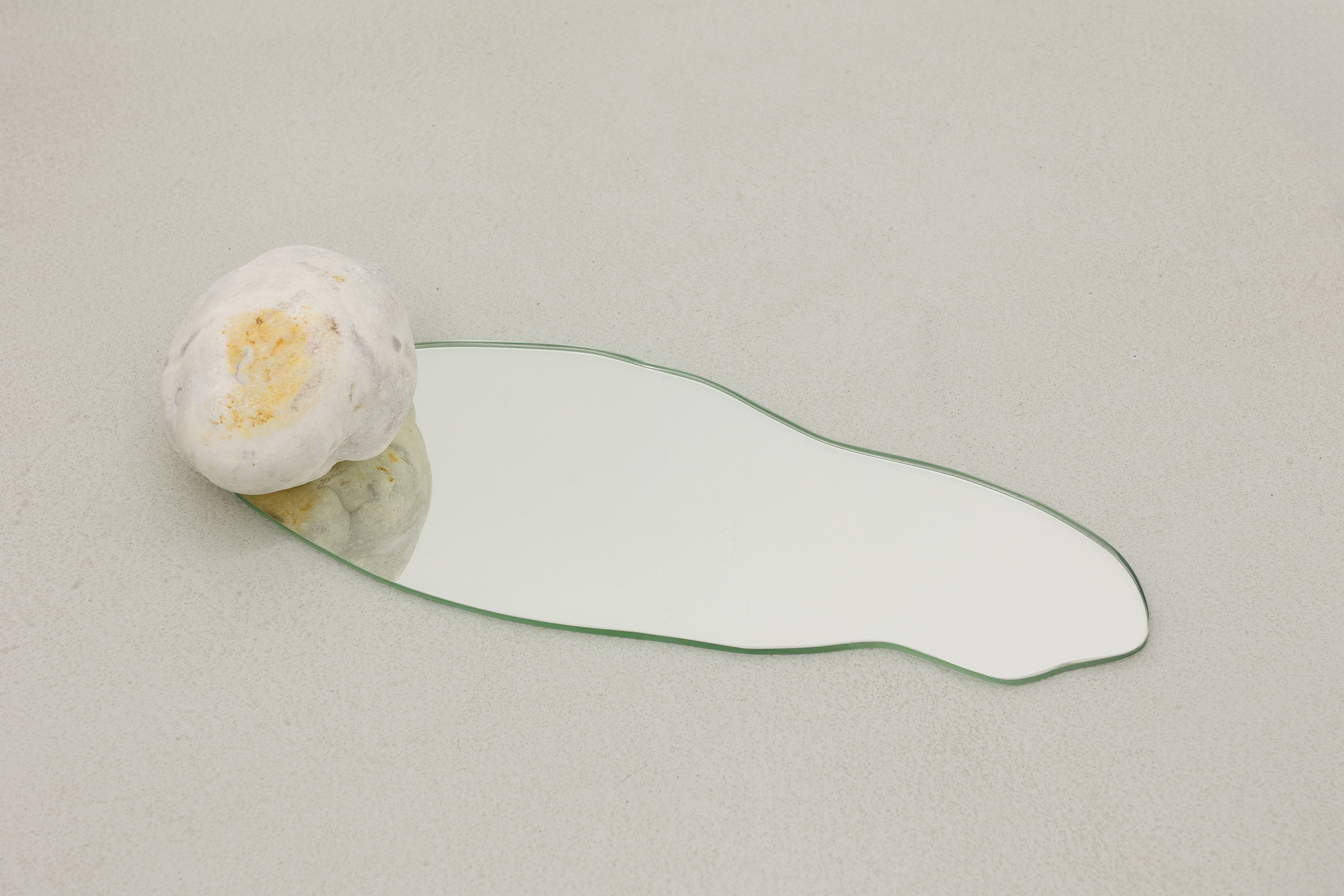
Reflejo 01
2025 Menalite and mirror Variable dimensions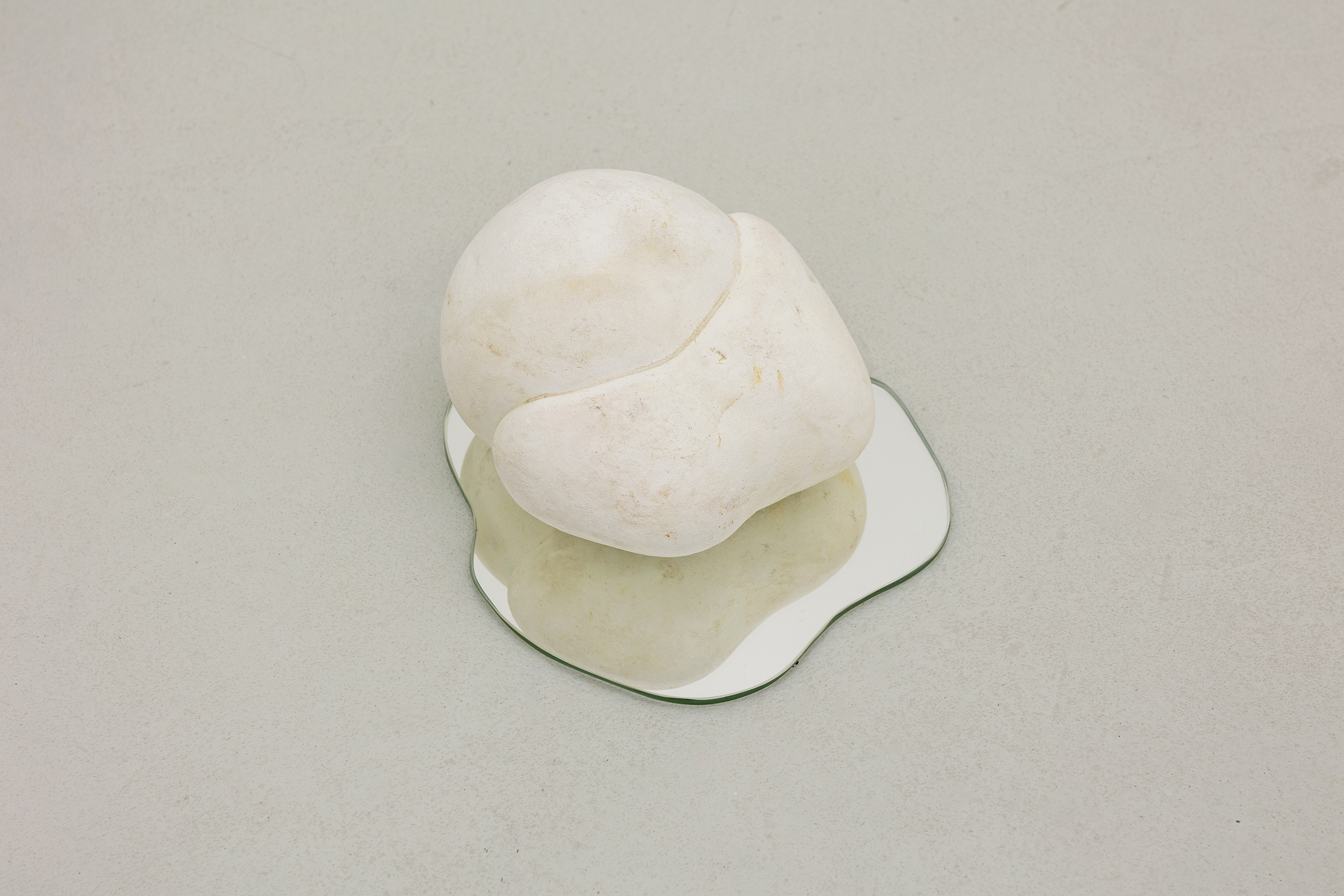
Reflejo 02
2025 Menalite and mirror Variable dimensions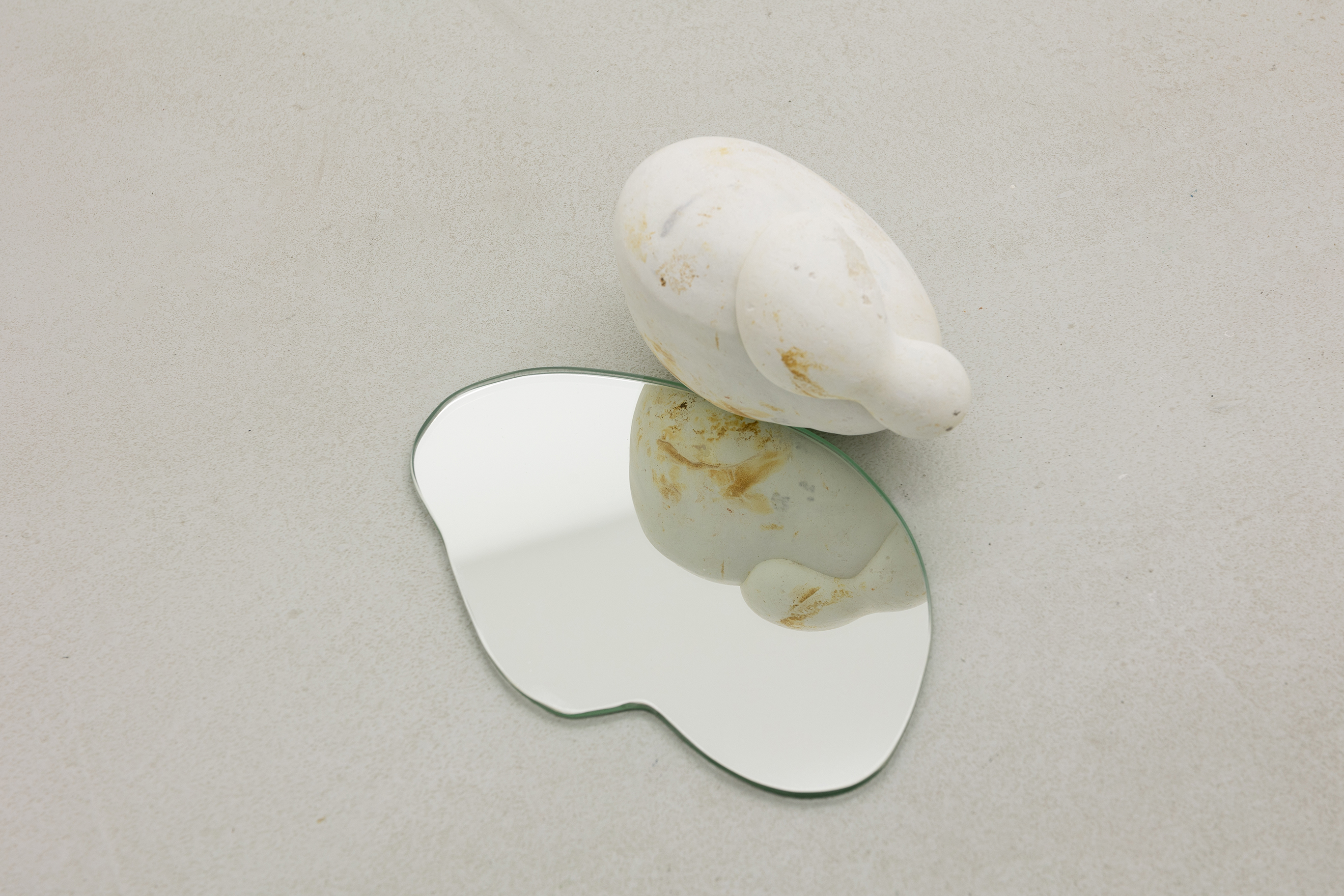
Reflejo 03
2025 Menalite and mirror Variable dimensions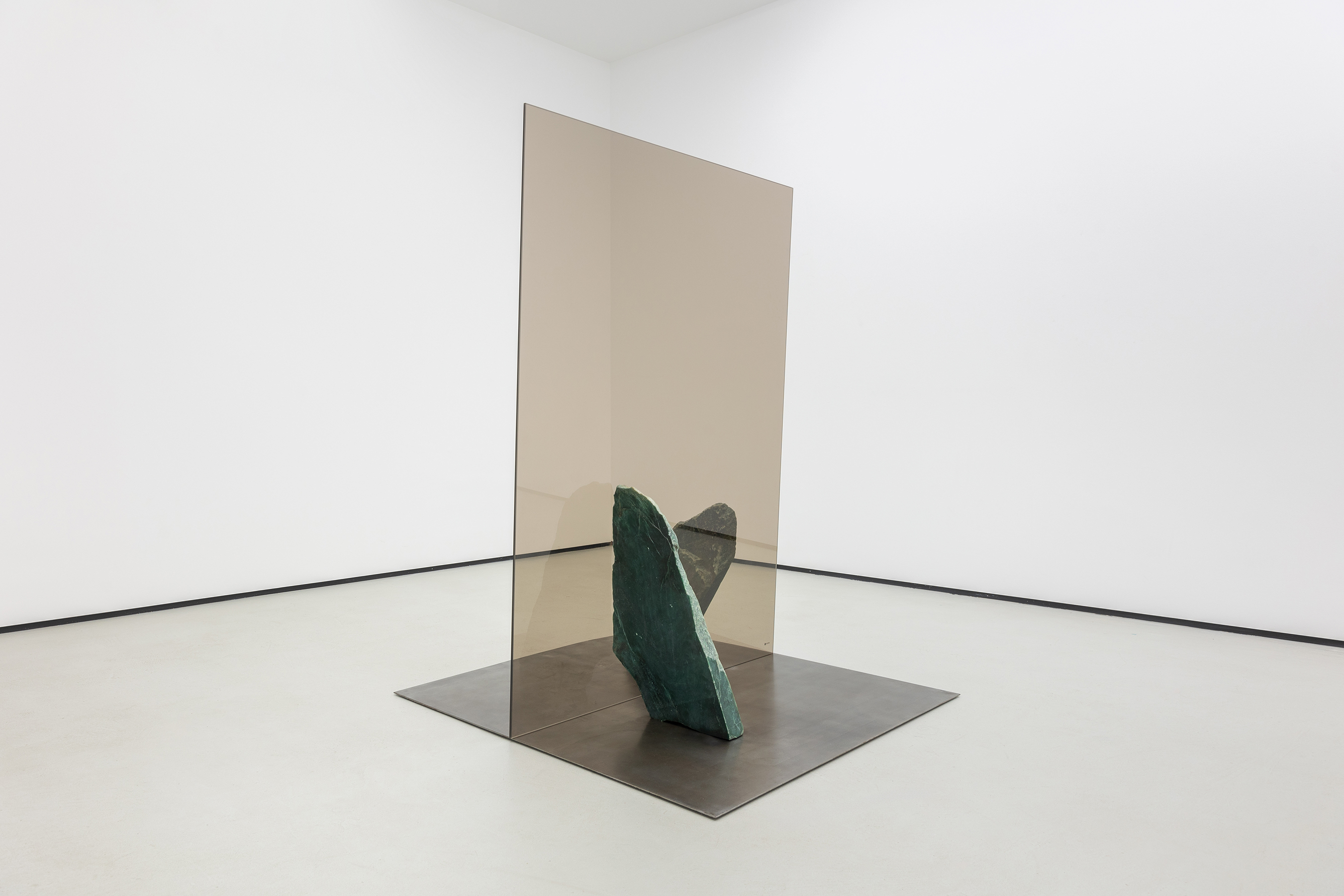
Ventana
2025 Aventurine; glass; iron 150 x 120 x 100 cm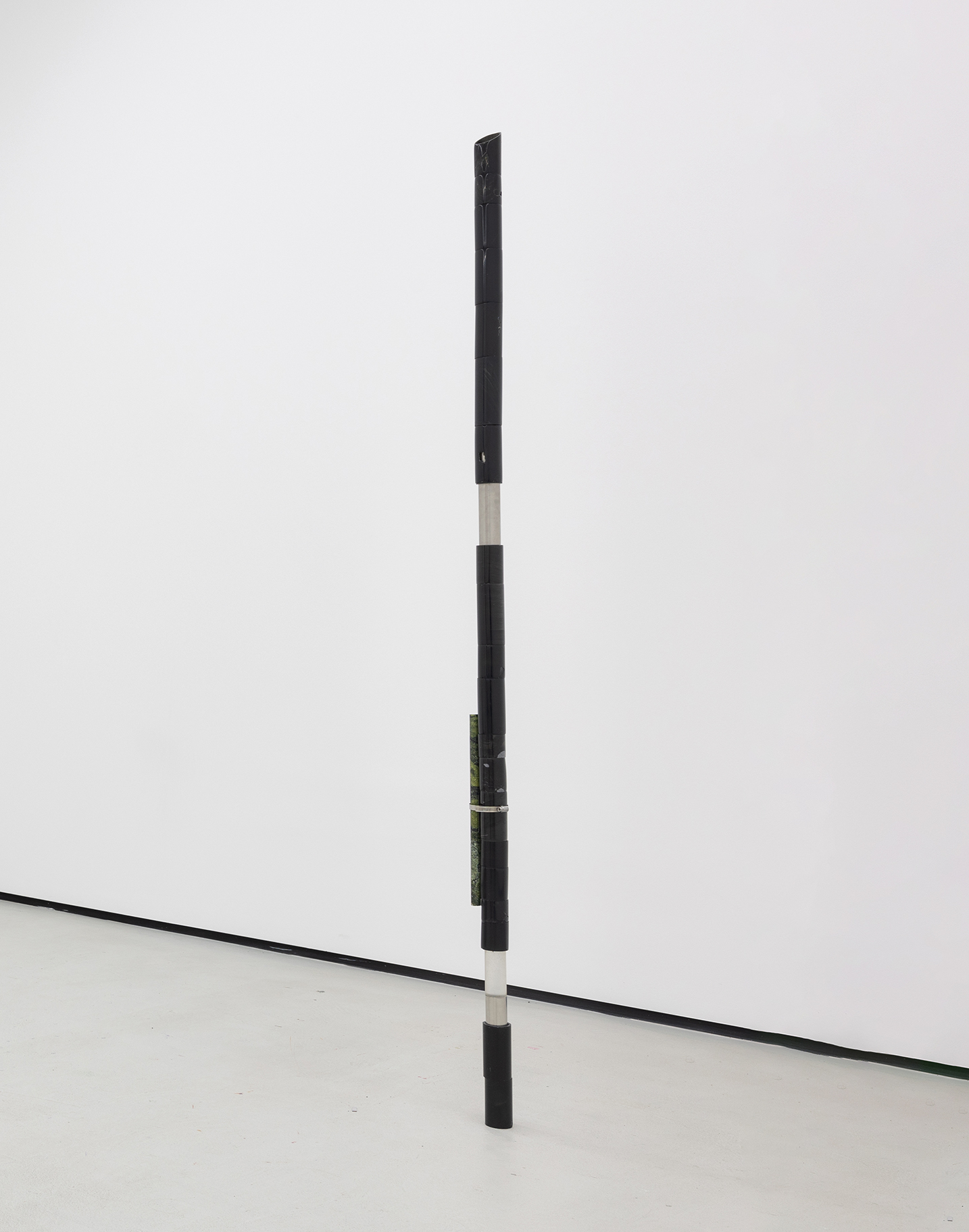
Tubos
2025 Obsidian; serpentine; resin; steel 170 x 6 cm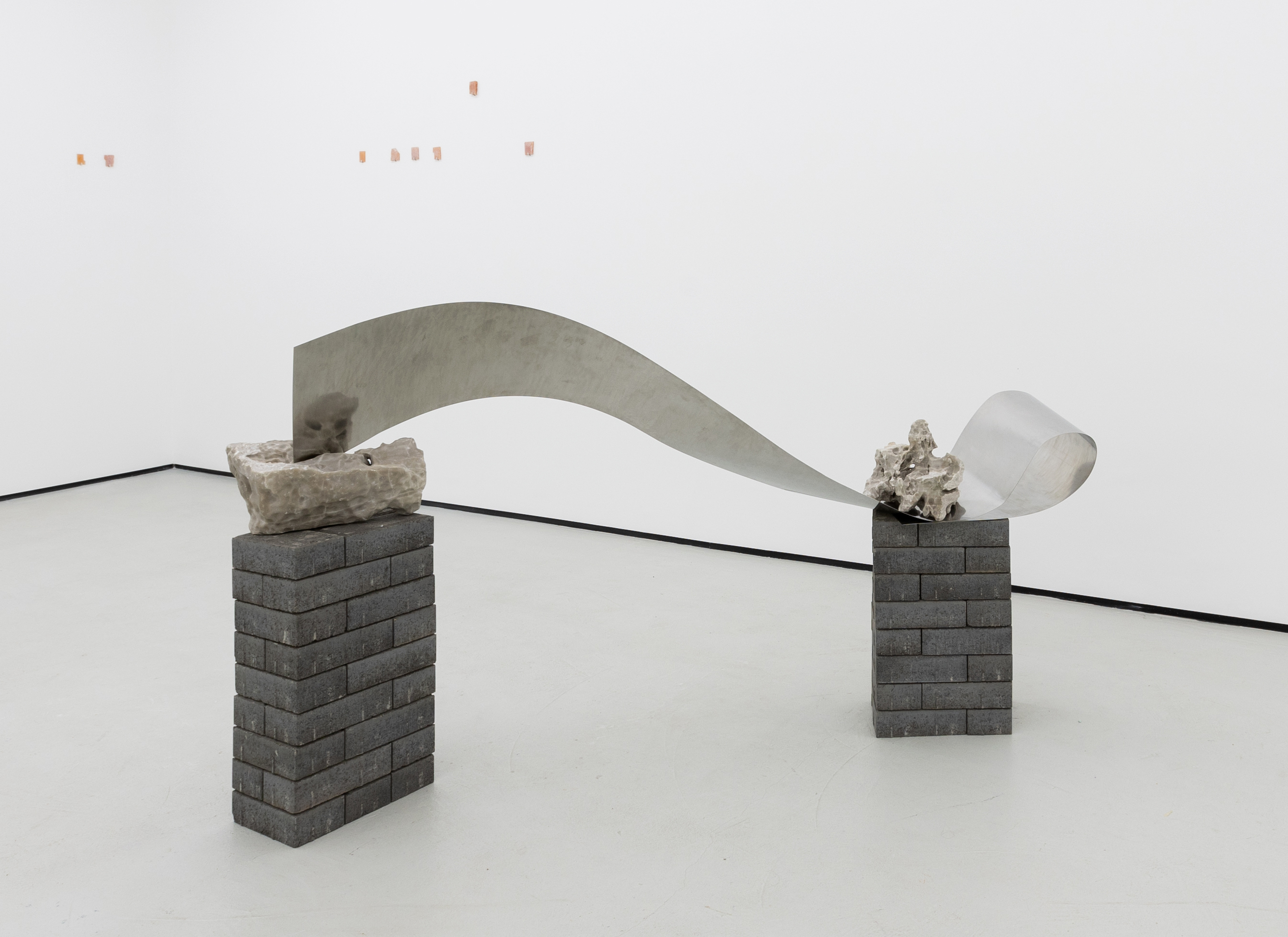
Olas
2025 Calcita y acero 40 x 200 x 60 cm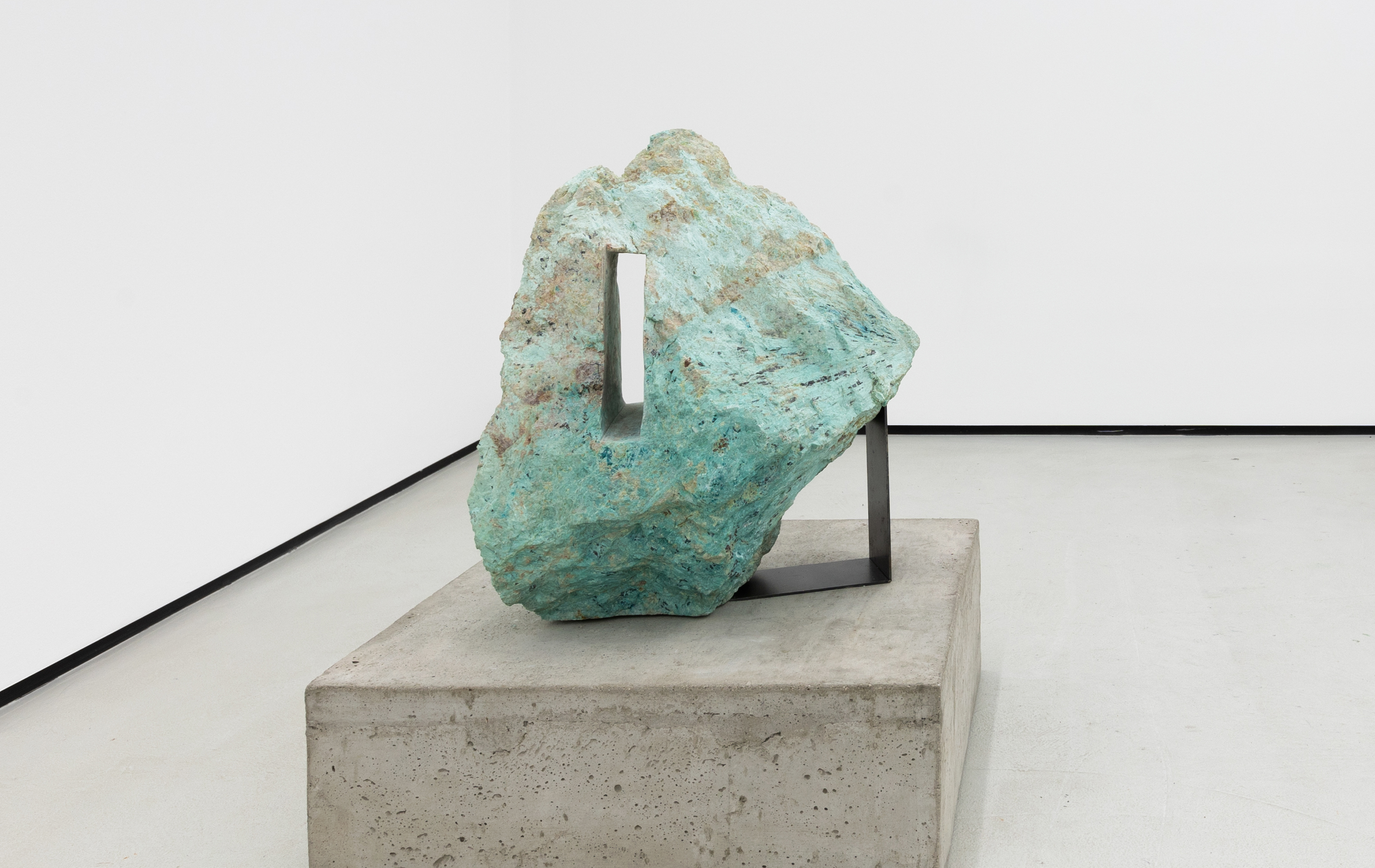
Palazzo
2025 amazonite and iron 60 x 70 x 20 cmCarla van den Berg
Carla Fiona van den Berg (London; 1998) is an Italian visual artist, based between Trieste and Lima. Graduated from the Gerrit Rietveld Academie in Amsterdam (2023), with one out of the 10 selected most relevant artworks of the graduating year, she has exhibited work in The Netherlands and Italy. Van den Berg’s practice reveals two main strands: on the one hand a purely material approach, where the manipulation of materials derived from the world of construction — chosen for their connotations of permanence and structuralism — explore the boundary between fragility and ephemerality. The other strand reflects a deep fascination with the relationships between space, memory, and the body. Her works can take shape either as large scale installations, mostly site specific, or as individual sculptures often part of an extensive material research.